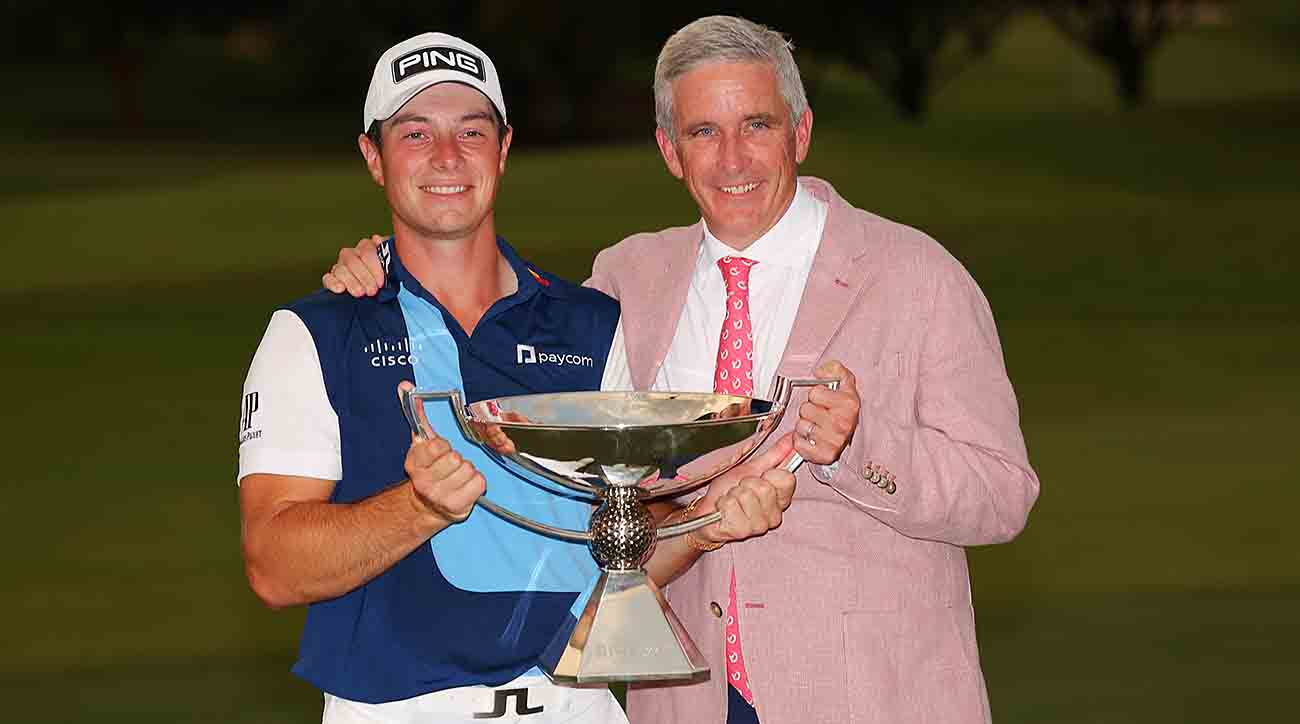Nobody Has the Answer for How the PGA Tour’s Investors Will Make Money
PONTE VEDRA BEACH, Fla. — Rory McIlroy was on the PGA Tour Policy Board until last year.
He was the Tour's most outspoken advocate, the poster child for the Tour's anti-Saudi and anti-LIV Golf stance.
McIlroy was let down last June 6 and since then the Ulsterman’s approach changed. In public he now espouses his own feelings and no longer serves as the Tour’s mouthpiece.
He sees the future differently than many on the board, including a path for LIV players to come back to the PGA Tour.
On Wednesday he talked about the next big issue: the Strategic Sports Group’s $3 billion total investment in the Tour and how the Tour can increase its revenue to offset the initial investment of $1.5 billion.
“I spoke to Tiger at Genesis a little bit, just about sort of everything, whether it be the PIF negotiations or SSG and equity and O.K., how are we going to—not we, how is the Tour going to grow and go from two and a half billion in revenue to four billion,” McIlroy said. “We're all part of the business now. We've all got these equity grants, so how do we make that equity grow so it benefits the players.”

PGA Tour commissioner Jay Monahan outlined a scenario of growing the game with fan engagement that would produce additional revenue from the broadcast networks, but considering that the networks are hemorrhaging money on a reported $700 million deal that runs through 2030 and that viewership is down in 2024, the odds of a windfall from that source seems very unlikely.
Sports Business Journal reported that viewership at last week's Arnold Palmer Invitational was down 30%.
With broadcasters struggling to make their initial investment back at the beginning of the contract, will this trend change? If so, can it change to the tune of $1.5 billion or more as needed?
McIlroy is asking the revenue question and no one, from players to the commissioner, seems to have a good answer.
Viktor Hovland is a rising young star at 26 years old and last year's FedEx Cup champion. He's someone who should be concerned with the future of the Tour.
But when asked about the Tour’s business and the distribution of the $750 million to 36 players, of which Hovland will be one, he had no clue.
Each time Hovland was asked on Wednesday about the business of the Tour, his answer was, “I don’t know.”
Even when asked why he was so uninformed, his answer was “I don’t know.”
That was comical, but Hovland is one of the players who spoke openly about Monahan’s leadership, or lack thereof, after the June 6 announcement of the framework agreement.
“I play golf for a living, I don't know exactly what should have been done because at the end of the day I don't have all the information, and I don't know that—I can't just say, O.K., this is what exactly needs to be done or should have been done,” Hovland said. “But at the same time, there were some things that were said that has been walked back on and then things have been very contradictory.
"As a leader of an organization, I will want a person like that to take some ownership and say, hey, we made a couple of mistakes but this is how we're going to rectify it, instead of kind of sweeping it under the rug, which I felt like has been done to a certain degree.”
Hovland isn’t alone. Two-time PGA champion Justin Thomas seems indifferent as well.
“I will be the first person to tell you guys exactly how I feel and speak my mind, and I’m never going to—I don't want to be a robot up here and say anything,” Thomas said. “But at the same time, I’m very uncomfortable talking about things that I don’t really know much about, and that I kind of like it that way. I think you can kind of go down that rabbit hole of wanting to know a lot and knowing a lot, but at the end of the day, I just want to play great golf and win golf tournaments.”
At the same time, Thomas said “I have a good group of guys that if I want to know more information, then I can reach out to them and they can try to fill my dumb self in.”
“I’m not necessarily sitting at home trying to come up with ideas of what's new ways that I can help,” Thomas added. “I’d like to think that I do as much as I can already, and I’ll just continue to try to do those things, and if other opportunities present itself, then I think myself and others will try to do so. But it’s a hard thing, right, to just come up with a couple things like ‘these-are-a-couple-items-that-could-help type thing.’”
Monahan wasn’t much more forthcoming when asked a similar question Tuesday about how will the Tour generate more revenue.
“The more that we can do to increase fandom, to bring our product forward in a way that is consistent with the way fans want to consume product and a better job and the more steps we can take to dimensionalize our great athletes, those are all steps that we can take to grow fandom,” Monahan said. “And when you grow fandom, ultimately that drives your commercial success.”
He provided no suggestions how the Tour can “dimensionalize” its players, but instead went back to talk about the Tour’s loyal corporate partners and then came back to the fans.
“But in a complex business, it does come back down, and it’s true for any sport,” Monahan said. “You’re only as strong as your fan base and you’re only as strong as your ability to grow that fan base.”
This is a fan base that is tired of the controversy, just ask anyone including McIlroy, Monahan and Thomas.
At the same time, not one player or member of Tour management can explain how they will not only reenergize the fan base but grow it exponentially.
With sponsors getting hit up for additional millions to grow the signature purses to $20 million, fans losing interest and television ratings falling, growing the revenue seems like a long uphill slog.
Has SSG bought a pig in a poke?
Only time will tell.
